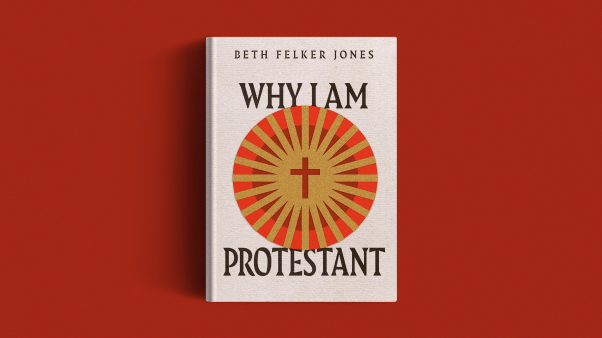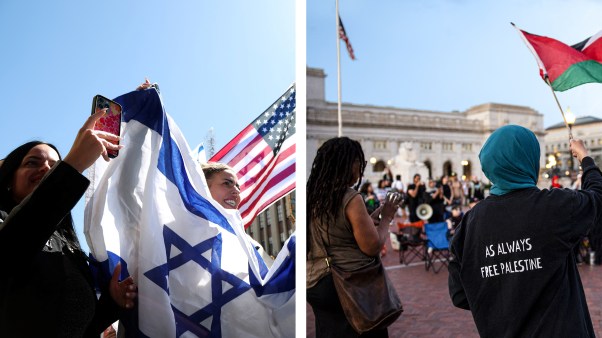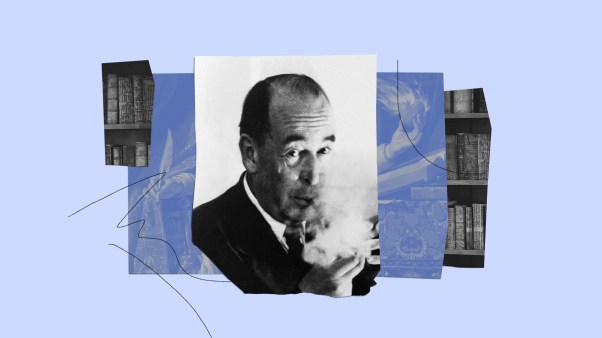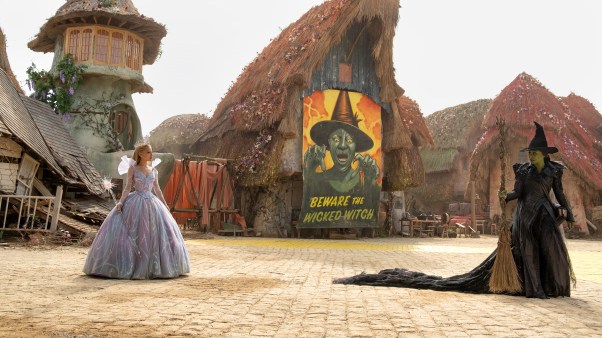A particular Christmas, or to be more exact, two Christmases, entered the modern imagination in 1868 through a much-beloved storybook, coloring our vision of Christmas ever since.
The first of these Christmases takes place under the shadow of war—the Civil War. A few days before the holiday, the four young daughters of an absent army chaplain mope together in the home that now seems so empty. They ruefully consider their holiday prospects: their “straightened circumstances” have reduced the customary Christmas bounty to a mere dollar apiece, doled out by their mother.
At first, each broods over her meager treasures, planning self-indulgent purchases. But in the end, they spend the money on gifts for their mother.
Each girl has evident talents but also evident weaknesses. The oldest is a motherly sort, perhaps grown up too soon, who works as a governess. Next is the tomboy, an aspiring author (transparently, the book’s author) and the family instigator, always writing and staging melodramas into which she drafts the others. Then the gentle third child, a peacemaker and a blessing to everyone, but dangerously frail. And last, a curly-haired, self-conscious beauty who wants to be an artist.
On Christmas morning, each finds a small New Testament with a colored cover under her pillow, placed there by motherly hands. And each becomes painfully aware of the petty, besetting sins that separate her from God and others. Together they rededicate themselves to following in the footsteps laid out in Bunyan’s Pilgrim’s Progress, a story they have acted out together as girls—up, down, in, under, and through the landscape of the family home.
Downstairs, they join their mother in pulling together as much of a Christmas breakfast as they can manage and placing it in a basket. This they bring to a poor immigrant family with a sick baby. Their selfless act is rewarded when they return home to the gift of a rich neighbor—a lavish Christmas feast with sweets, and flowers to brighten their table.
The book’s second Christmas takes place the following year. The family has weathered the near-death of their sweet third sister of scarlet fever and the news from the front of their father’s temporary, critical illness. As they gather for the holiday, they receive a joyous surprise—their father returns, well and happy. Together again, they trade gifts and endearments, reveling in each other’s company.
The Christmases of Louisa May Alcott’s Little Women still shine forth a bright, good hopefulness in the midst of trying times—a hopefulness made solid in the bond of family and the desire to live well in God’s sight. What allows Alcott’s story to escape the saccharine orbit of many sentimentalist tales and speak to us in deep ways?
Yes, the author’s sure narrative touch and vivid characterization. But also this, I think: Alcott knows intimately and presents lovingly truths that were the Victorian era’s special treasure.
The foremost of these is the truth we still recall every Christmas season: Every family, whatever its trials and stresses, is a God-given blessing to be treasured and celebrated. Each of us is meant to grow and flourish within a family, becoming all God means us to be. Without family, the way is—not impossible, but harder and colder.
It has become difficult even to write this today, so thoroughly ridiculous has Victorian culture been made to seem in the jaded, secularized world of modern America. The word “Victorian” has taken on the quality of a curse-word, as “Puritan” did in the original permissive generation, the wide-open decade of the 1920s, through the acid pen of such modernizing critics as journalist H. L. Mencken.
Certainly, the critics have their ammunition. The Victorians on both sides of the Atlantic indulged a naive materialism, blind to the complex web of systemic sin that supported their comfortable lifestyles. In their crusading Protestantism, they sometimes slipped into an unpleasant ethnic and cultural insularity. And they had a maddening habit of oversimplifying moral issues, as they stuck their noses in every social nook and cranny in search of vice to purge and souls to uplift.
But Louisa May Alcott’s warm tale points to all that was good about that earnest century. It was the age the Young Men’s Christian Association (YMCA) first provided young men newly arrived in the burgeoning industrial cities a haven from those cities’ too-available and destructive social vices. It was the time when thousands of Christians worked tirelessly to bring about the abolition of slavery, while others campaigned successfully for thoroughgoing reform of prisons and local government. And it was the era of the successful reversal—by the massive, woman-led temperance movement—of a destructive national trend of drunkenness.
The Victorians did—there’s no getting around it—change their society for the better. The reason? The transforming power of the little books under their pillows.
Theirs was, in fact, the last thoroughly Christian society in Western history.
The wars, social problems, and (most damagingly) material prosperity of the 20th and 21st centuries have so far birthed no comparable public Christian culture. We seem more distant than ever from the Victorians, whose celebration of stronger, purer virtues still cheers and challenges us from the poignant pages of Little Women.
This Christmas, let’s reawaken to the Victorians’ vision of families and societies healed by a gospel not just read, but lived.
Merry Victorian Christmas, everyone.
Chris Armstrong is managing editor of Christian History magazine.
Copyright © 2002 Christianity Today. Click for reprint information.
Related Elsewhere
More Christian History, including a list of events that occurred this week in the church’s past, is available at ChristianHistory.net.Subscriptions to the quarterly print magazine are also available.
Christian History Corner appears every Friday at ChristianityToday.com. Previous editions include:
No Humbug | A Christmas Carol remains the quintessential holiday story, but why? (Dec. 20, 2002)
‘Tell Billy Graham the Jesus People Love Him.’ | How evangelism’s senior statesman helped the hippies “tune in, turn on to God.” (Dec. 13, 2002)
Advent—Close Encounters of a Liturgical Kind | ‘Tis the season when even the free-ranging revivalist pulls up a chair to the table of historic liturgy. (Dec. 6, 2002)
Dig that Billy Graham Cat! | How the grand old man of evangelism helped create Christian youth culture in the zoot-suit era. (Nov. 22, 2002)
From Swamped Creatures to Separated Brethren | Non-Catholics’ spiritual status improved dramatically from Unam Sanctam to Vatican II, but where are we now? (Nov. 15, 2002)
An ‘Ordinary Saint’ in Wartime | William Wilberforce saw two long charitable campaigns through, even in war’s distracting shadow. (Nov. 8, 2002)
Just War, Just Nation? | World War II preacher points America back to the nation’s soul. (Nov. 1, 2002)
No Sex (Before Marriage), Please … We’re Christian | Miss America preaches a 2000-year-old message. (Oct. 25, 2002)
The King Is Coming, Eventually | What if you announced the rapture, but God didn’t show up? (Oct. 18, 2002)
Timeline of the Spirit-Gifted | Before Moody, Finney, Edwards, and Mather came a long line of Catholic and Orthodox believers reputed to enjoy “the promise of the Father.” (Oct. 11, 2002)
Do Non-Charismatics ‘Do’ Holy Spirit Baptism? | Ask D. L. Moody, Charles G. Finney, Jonathan Edwards, or Cotton Mather. (Oct. 4, 2002)
Standing Alone for Unity | The attempt to bring European Christians together forced one reformer, Caspar Schwenckfeld, straight to the fringe. (Sept. 20, 2002)
9/11, History, and the True Story | Wartime authors J. R. R. Tolkien and C. S. Lewis help put 9/11 in perspective. (Sept. 13, 2002)
Evangelicalism’s Decades of Fire | New historical survey highlights twentieth-century evangelicalism’s impassioned middle decades. (Sept. 6, 2002)
A Protestant Bishop Speaks Out on the Stakes of Public Education | Why concerned parents should read the 17th-century Moravian educational reformer Jan Amos Comenius. (Aug. 30, 2002)
Spurgeon on Jabez | What history’s most prolific preacher said, in 1871, about the Prayer of Jabez (Aug. 23, 2002)
History in a Flash | A new CD-ROM offers quick access to the facts of church history, plus interactive quizzes. (Aug. 16, 2002)
How the Early Church Saw Heaven | The first Christians had very specific ideas about who they would meet in the afterlife (Aug. 9, 2002)
Divvying up the Most Sacred Place | Emotions have historically run high as Christians have staked their claims to the Church of the Holy Sepulchre (Aug. 2, 2002)








